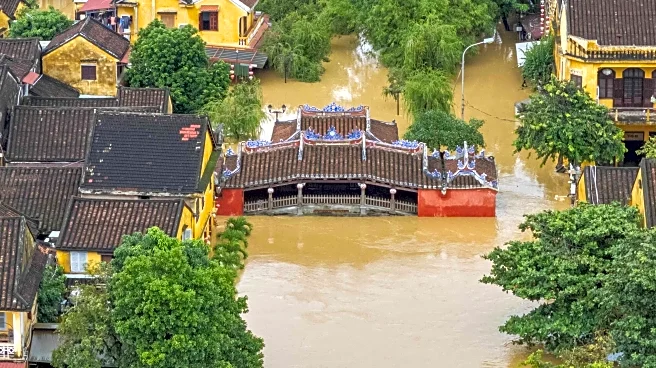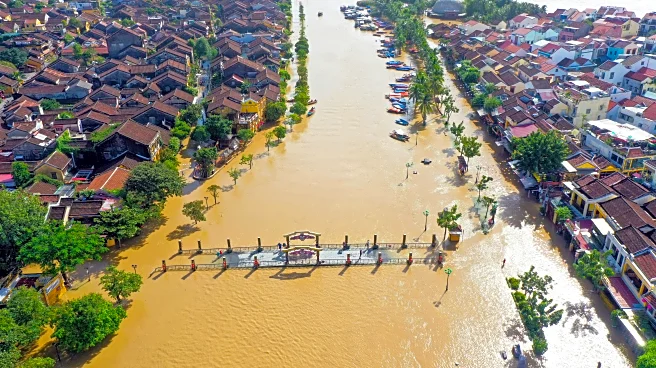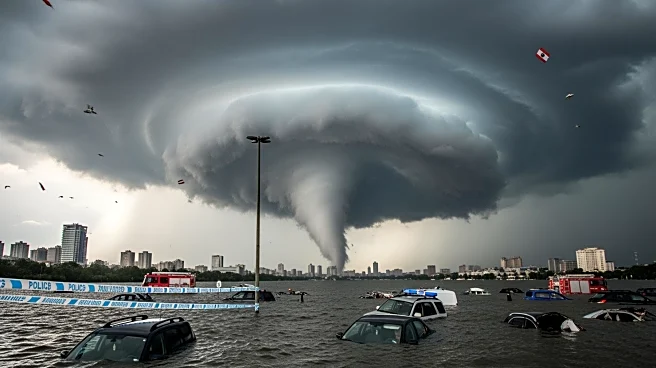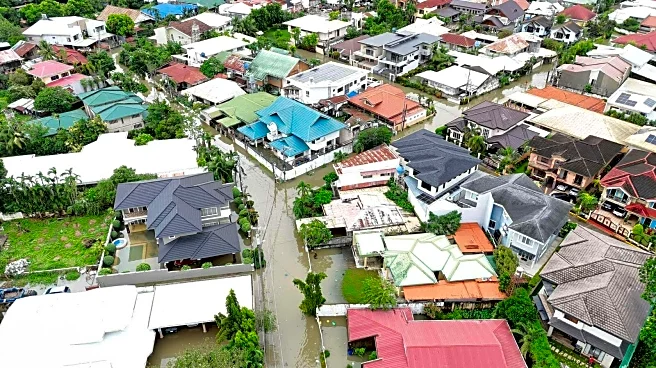What's Happening?
Vietnam is bracing for Typhoon Kalmaegi, which is expected to hit the southern coast as a severe typhoon later this week. The storm is currently moving across the South China Sea, with predictions of heavy rain and potential damage to Vietnam's coffee-growing
regions. The country is still recovering from recent floods that have left 37 dead and caused significant damage to crops and homes. In response, the government has approved an emergency relief fund of 450 billion dong ($17.1 million) to aid recovery efforts in the worst-affected areas, including Hue, Danang, Quang Tri, and Quang Ngai.
Why It's Important?
Vietnam's vulnerability to cyclones is exacerbated by climate change, increasing the frequency and intensity of storms. The approval of the emergency relief fund highlights the government's proactive approach to disaster management, aiming to mitigate the impact on affected communities. The economic implications are significant, as the storms have already cost the economy over $2 billion this year. The relief efforts are crucial for the recovery of the agricultural sector, particularly in regions vital for coffee production, which could face further damage from the impending typhoon.
What's Next?
As Typhoon Kalmaegi approaches, Vietnam's disaster management authorities are on high alert, preparing for potential evacuations and further relief efforts. The government is likely to continue monitoring the situation closely, with possible additional funding and resources allocated to support affected regions. The international community may also offer assistance, given the scale of the disaster and Vietnam's strategic importance in global agricultural markets.
Beyond the Headlines
The recurring natural disasters in Vietnam underscore the urgent need for sustainable development and climate resilience strategies. Long-term investments in infrastructure and community preparedness could reduce the impact of future storms, safeguarding both lives and economic stability. The situation also highlights the broader challenges faced by Southeast Asian nations in adapting to climate change.















